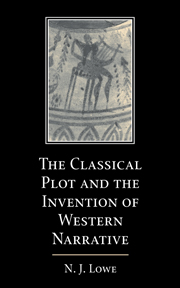2 - A cognitive model
Published online by Cambridge University Press: 22 September 2009
Summary
First, some key terms. Basic to modern narrative theory is a distinction between two or more levels in any work of fiction. Unfortunately, they are variously labelled, and even more variously defined. For reasons explained shortly, I favour the scheme (but not the terminology) of Bal 1985. First, there are the events of the story itself; next, there is the way those events are told to the reader; and finally, there is the actual text that the reader reads. I use, with misgivings, the three terms story, narrative, and text; these words will be used only in the senses here defined.
story is the favoured Anglo-Saxon term for the French histoire, the Russians' fabula, and Aristotle's logos. In respective opposition to discours, sjuzhet, and mythos, it marks the most fundamental distinction in mainstream narrative theory: between the content of a tale and its presentation, the things that are supposed to have happened in the world of the story as against the way the reader actually learns of them.
‘Story’ is not an ideal label for this specialised concept. It is, of course, vernacularly used to mean a narrative text – as in ‘an O. Henry story’, ‘a story I wrote at school’. Some important cognitive work, in particular, has used the term specifically in this sense, to the extent that Schank and Abelson's Yale AI group was teased for its doggedly textual (and minimal) definition of a ‘story’.
- Type
- Chapter
- Information
- Publisher: Cambridge University PressPrint publication year: 2000



